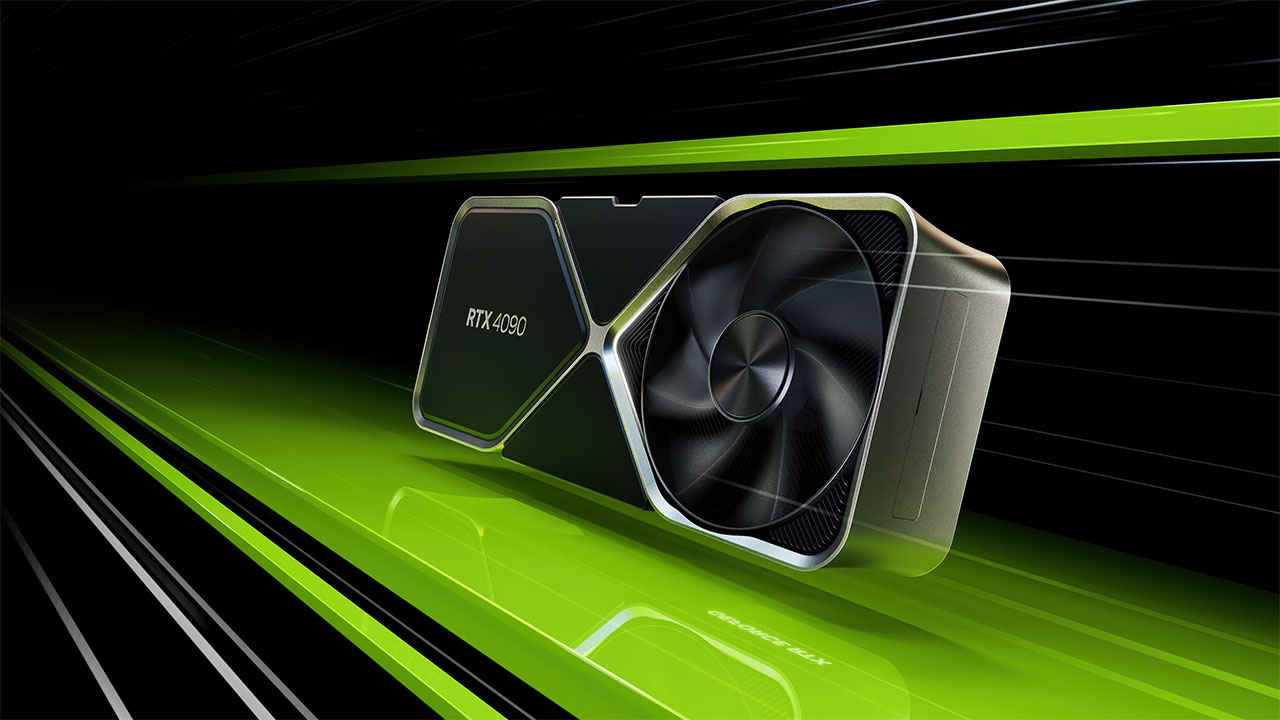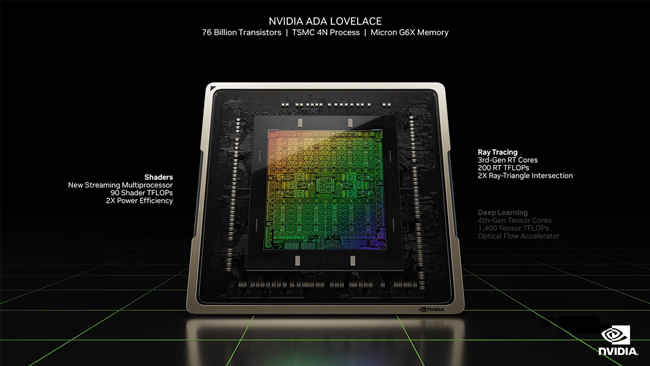NVIDIA RTX 40 Series graphics cards featuring Neural Rendering announced at GTC 2022

NVIDIA GeForce RTX 4090 with DLSS 3 is up to 4x faster compared to last generation’s RTX 3090 Ti with DLSS 2
NVIDIA GeForce RTX 4090 will have a TDP of 450W which is the same as the RTX 3090 Ti
NVIDIA GeForce RTX 4090 will be available on Oct. 12, 2022 starting at $1,599
NVIDIA RTX 40 Series desktop gaming graphics cards featuring NVIDIA’s new Ada Lovelace architecture was unveiled at NVIDIA GTC 2022. The launch lineup includes the NVIDIA GeForce RTX 4090, RTX 4080 16GB and RTX 4080 12GB graphics cards. The RTX 4090 will be available for sale starting October 12, 2022 starting at $1,599 which is approximately INR 1,47,500. The official price in India for the RTX 4090 will be unveiled closer to launch.
“The age of RTX ray tracing and neural rendering is in full steam, and our new Ada Lovelace architecture takes it to the next level,” said Jensen Huang, NVIDIA’s founder and CEO, at the GeForce® Beyond: Special Broadcast at GTC. “Ada provides a quantum leap for gamers and paves the way for creators of fully simulated worlds. With up to 4x the performance of the previous generation, Ada is setting a new standard for the industry”.
NVIDIA Ada Lovelace Architecture
NVIDIA Ada Lovelace architecture powers the new RTX 40 series GPUs and brings with it several improvements which NVIDIA terms as a “Quantum Leap” in performance. These include 3rd Gen RT Cores, 4th Gen Tensor Cores, Ada Optical Flow Accelerator and Shader Execution Reordering (SER).
Here are the key features of the new NVIDIA RTX 40 series cards in more detail:
-
Much more streaming multiprocessors (SM) with up to 83 teraflops of shader power. The NVIDIA RTX 4090 has 16,384 CUDA Cores which is a huge bump compared to the 10496 CUDA Cores that the RTX 3090 had.
-
Third-generation RT Cores with up to 191 effective ray-tracing teraflops. This is reportedly up to 2.8x over the previous generation.
-
Fourth-generation Tensor Cores with up to 1.32 Tensor petaflops which works out to be up to 5x over the previous generation using FP8 acceleration.
-
Shader Execution Reordering (SER) is a new technology similar to out of execution that improves execution efficiency by rescheduling shading workloads on the fly. SER improves ray-tracing performance up to 3x and in-game frame rates by up to 25 per cent.
-
Ada Optical Flow Accelerator with 2x faster performance allows DLSS 3 to predict movement in a scene, enabling the neural network to boost frame rates while maintaining image quality.
-
Architectural improvements which make the most of TSMC’s 4N process node to get up to 2x improvement in terms of power efficiency.
-
Dual NVIDIA Encoders (NVENC) allows content creation software such as OBS, Discord, Blackmagic Design to cut export times significantly. And it also features AV1 support.
NVIDIA GeForce RTX 4090
The NVIDIA GeForce RTX 4090 features 16,384 CUDA Cores and 24 GB of GDDR6X memory. NVIDIA claims that the RTX 4090 can consistently provide more than 100 FPS when running video games at 4K resolution. It will be available for $1,599 starting October 12, 2022.
NVIDIA GeForce RTX 4080 16GB
The NVIDIA GeForce RTX 4080 16GB features 9,728 CUDA Cores and 16 GB of GDDR6X memory. NVIDIA claims that the RTX 4080 16GB graphics card is 2x as fast as the RTX 3080 Ti. It will be available for $1,199 starting October 12, 2022.
NVIDIA GeForce RTX 4080 12GB
The NVIDIA GeForce RTX 4080 12GB features 7,680 CUDA Cores and 12 GB of GDDR6X memory. NVIDIA claims that the RTX 4080 16GB graphics card is faster than the RTX 3090 Ti. It will be available for $899 starting October 12, 2022.
Mithun Mohandas
Mithun Mohandas is an Indian technology journalist with 10 years of experience covering consumer technology. He is currently employed at Digit in the capacity of a Managing Editor. Mithun has a background in Computer Engineering and was an active member of the IEEE during his college days. He has a penchant for digging deep into unravelling what makes a device tick. If there's a transistor in it, Mithun's probably going to rip it apart till he finds it. At Digit, he covers processors, graphics cards, storage media, displays and networking devices aside from anything developer related. As an avid PC gamer, he prefers RTS and FPS titles, and can be quite competitive in a race to the finish line. He only gets consoles for the exclusives. He can be seen playing Valorant, World of Tanks, HITMAN and the occasional Age of Empires or being the voice behind hundreds of Digit videos. View Full Profile






